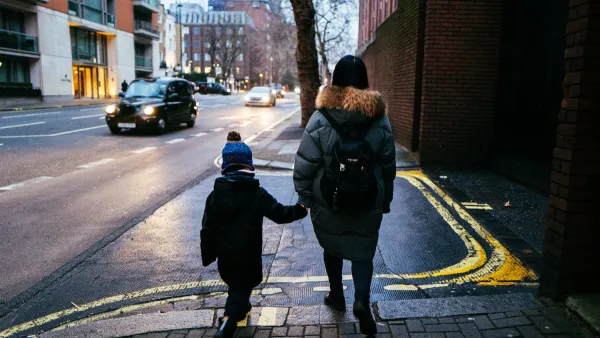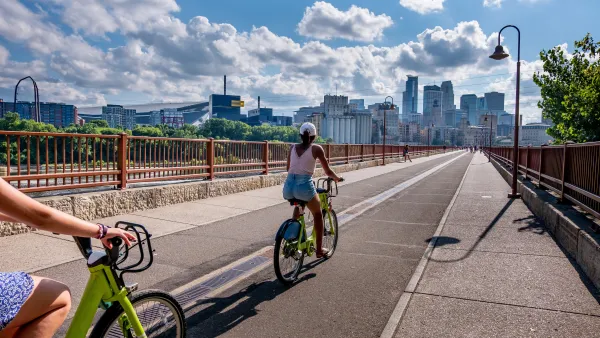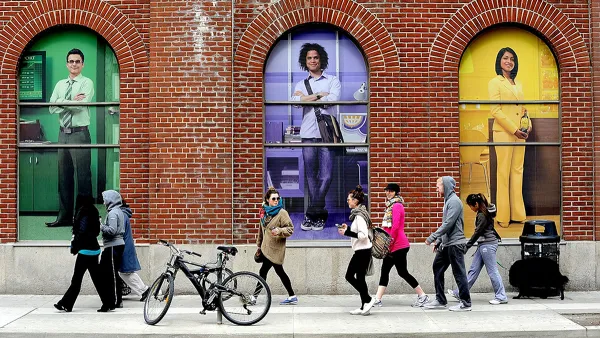Gas tax increases can mean more road funding, period, particularly where constitutional restrictions prohibit spending gas tax revenues on other modes, as exists in Pa.; yet all modes will benefit from the 28-cent gas tax increase legislation.
Angie Schmitt writes that transit will definitely benefit from the bill that Gov. Tom Corbett signed on Monday that is estimated to increase wholesale gas taxes by 28-cents over three years. This increase includes the elimination of the 12-cent state excise tax on gasoline.
Philadelphia transit agency SEPTA gets a big funding boost, enough to spare disastrous service cuts. Pittsburgh transit will also get some much welcome financial stability after years of uncertainty, fare hikes, and threats to service.
According to The Daily Pennsylvanian, the bill "will provide about $350 million in funding to SEPTA, which would have closed nine of its 13 regional rail lines by 2023 if it did not receive the extra funds." Read more about the "Doomsday Plan" the agency had prepared.
The below email from the Pittsburgh Post-Gazette explains how public transit received funding from the bill. Pennsylvania is one of 30 states that restricts gas tax revenues to road-only applications according to Brookings "Fueling Transportation Finance: A Primer on the Gas Tax" (PDF).
Transit will get funding from a variety of sources, but nothing from the Oil Company Franchise Tax. The Pa Turnpike currently pays PennDOT $450 million a year, $200 million of which goes to roads-bridges and $250 million to transit. The $200 million will be redirected to transit. Some "nonrestricted" vehicle fees that aren't constitutionally reserved for roads-bridges will go to transit, as will a share of the increases in traffic fines.
Walking and biking are also big winners, writes Sarah Stuart, whose group, PA Walks and Bikes, had been lobbying the legislature all year to ensure that active transportation funding would be in the bill.
As (PennDOT Secretary Barry) Schoch told advocates Monday night, “This is the biggest step forward for the bicycle and pedestrian modes of transportation in the history of Pennsylvania.”
Stuart lists four ways in which active transportation benefits, including:
- Sets an annual minimum of $2 million of that fund to be spent on bicycle and pedestrian facilities;
- Explicitly states that Pennsylvania’s comprehensive transportation system includes Pennsylvania’s “numerous bicycle and pedestrian facilities,” which will make it easier for bicycle/pedestrian projects to compete for highway funds.
Stuart credits all the groups working "with the Keystone Transportation Funding Coalition and the health groups that collaborated on Walk Ride PA" for the funding for active transportation.
According to the Pittsburgh Post-Gazette, the legislation "will result in a net increase in the state gasoline tax of 9.5 cents per gallon starting Jan. 1; another 9.7 cents for 2015; and at least 8 cents for 2017." It is anticipated that gas retailers will pass "all or most" of the tax to motorists, writes Dustin Hockensmith of The Patriot-News.
Ryan Holeywell of Governing writes that the new law "will eventually mean more than $2.3 billion annually in additional funds for transportation infrastructure."
FULL STORY: Pennsylvania Transportation Bill a “Dramatic Win” for Biking and Walking

National Parks Layoffs Will Cause Communities to Lose Billions
Thousands of essential park workers were laid off this week, just before the busy spring break season.

Retro-silient?: America’s First “Eco-burb,” The Woodlands Turns 50
A master-planned community north of Houston offers lessons on green infrastructure and resilient design, but falls short of its founder’s lofty affordability and walkability goals.

Delivering for America Plan Will Downgrade Mail Service in at Least 49.5 Percent of Zip Codes
Republican and Democrat lawmakers criticize the plan for its disproportionate negative impact on rural communities.

Test News Post 1
This is a summary

Test News Headline 46
Test for the image on the front page.

Balancing Bombs and Butterflies: How the National Guard Protects a Rare Species
The National Guard at Fort Indiantown Gap uses GIS technology and land management strategies to balance military training with conservation efforts, ensuring the survival of the rare eastern regal fritillary butterfly.
Urban Design for Planners 1: Software Tools
This six-course series explores essential urban design concepts using open source software and equips planners with the tools they need to participate fully in the urban design process.
Planning for Universal Design
Learn the tools for implementing Universal Design in planning regulations.
EMC Planning Group, Inc.
Planetizen
Planetizen
Mpact (formerly Rail~Volution)
Great Falls Development Authority, Inc.
HUDs Office of Policy Development and Research
NYU Wagner Graduate School of Public Service





























